
Walk in a lowland forest in Suriname and you’ll hear an extraordinary symphony of birds, monkeys and insects. Orchids drape from the branches, dragonflies lite on branches, and colorful jacamar, woodstar and tanager birds flit in the tangled shade. Ancient lianas form twisted patterns in their loops and curves down to the dense understory which conceals jaguars and pumas, and their prey of agouti, deer and pecari. Groups of capuchin and squirrel monkeys call close to the trail, feeding on insects and the flowers of the kofimama tree (so named for the protective shade that it provided to the coffee plants in the original plantations from the 1700s).
Protecting these forests and their biodiversity against increasing pressure from logging and land clearing for agriculture is the focus of Dr. Marilyn Norconk (Kent State University, Ohio, and Anton De Kom University, Suriname). In 2012, Marilyn and Sylvia Atsalis (U. Chicago) initiated a Fulbright Research program called Suriname Forest Fragment Project (SFFP). She works with local conservation biologists Chantal Landberg and Arioené Vreedzaam and is implementing a community education program to instill the value of maintaining existing forests and reestablishing corridors between forest fragments, cementing community bonds to forest fragments and helping residents develop a sustainable forest protection program. Educating children in these rural communities is a critical step in developing a sustainable culture of conservation and appreciation for the forests and animals.
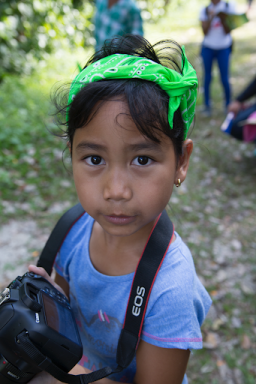
The PICC program (Photography Inspiring Children in Conservation) was founded in 2016 by conservation photographer Kathy West who envisioned the link between learning the skills of wildlife photography and effectively engaging children with the ecosystems surrounding their homes. Through photography and developing a field journal, the children learn to truly look at the tiniest insect or flower, understand animal lives and habitat needs, gain an appreciation for the interaction of animals with their environment, and learn to care about protecting these ecosystems. Ultimately we want to inspire the children to become lifelong learners and conservation leaders within their communities by providing them with skills and knowledge through the arts of photography, illustrations and writing.
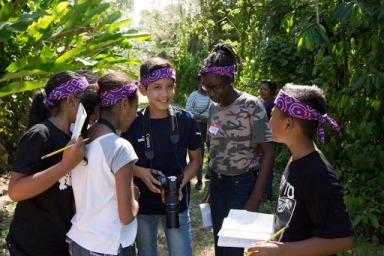
Collaborating with Dr. Marilyn Norconk and relying on her extensive ecological knowledge and established community relationships, Kathy and Marilyn worked with thirty-two 9 and 10 year old students from the rural Surinamese village of Lelydorp to teach them about their local flora, fauna and forest ecosystems from 08 October to 13 October, 2018. The children and their teachers were thrilled to explore a Tropical Butterfly Center and the forested area of Peperpot Nature Park, while developing skills in photography, field journals and using binoculars.
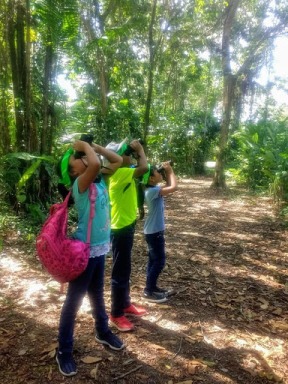
The students made countless discoveries in the forest and recorded their findings with notes and sketches in their journals. Seeing the excitement in their faces as they made a new discovery or proudly shared the camera screen of their image was so rewarding to Kathy, Marilyn and their teachers.


Following the field trips, the children continued to develop the information and drawings in their journals. Many added pressed plants, expanded observations, and made complex and colorful drawings of the biodiversity that they had seen on our field outings. Their field journals reflected a deep understanding of the plants and animals, and the children talked about continuing to use their journals in their neighborhoods to make more discoveries, sketches and notes about what they learned.
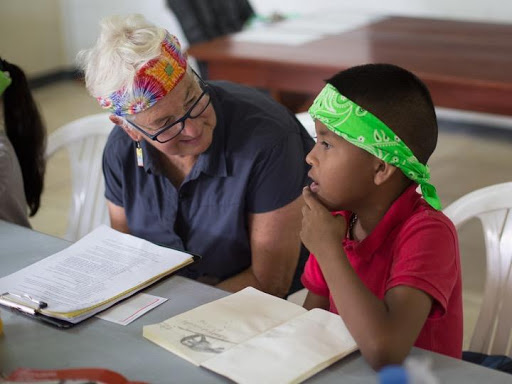
The children were incredibly successful in capturing gorgeous images using Canon DSLR cameras with a 300mm telephoto zoom lens. Kathy selected a photograph from each child’s images to enlarge, print and laminate.
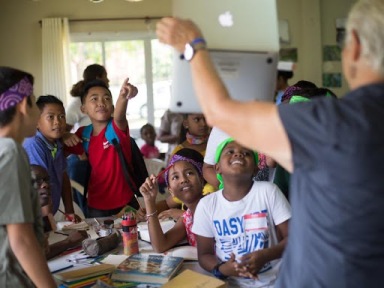
On the last day of the workshop the children arrived early in the morning to share their journals and to see and describe their photos. They were beyond excited to see their printed photographs and to help to hang it with a gallery style placard describing the image, their thoughts and the discoveries they had made by looking closely at the enlarged print.
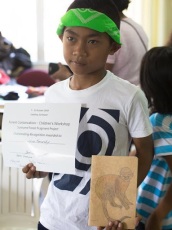
After sharing a delicious Surinamese lunch, the children, TAs and program leaders welcomed the parents and siblings to their gallery display. Each child stood next to their print and excitedly spoke of their experience and accomplishments.
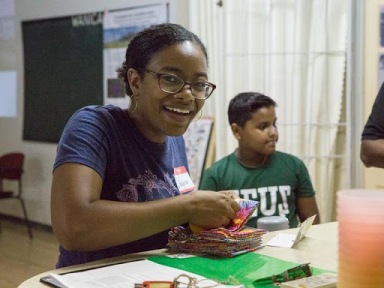
The children talked about bringing their parents to the nature areas and expressed excitement about continuing to work in their journals. We hope that we have instilled a lifelong appreciation and passion for protecting the forests, the animals and the ecosystems in their neighborhoods and their beautiful country of Suriname.
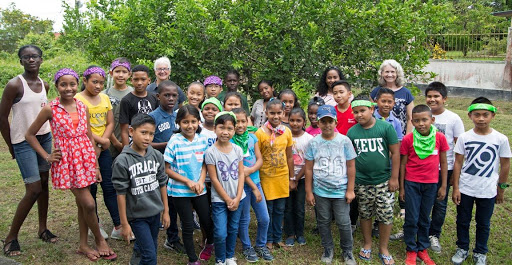
PICC is partially funded by a grant from the American Society of Primatologists Conservation Committee. To support future sessions around the world, please visit our Support Us page and learn how you can help.
Don’t forget! You can keep up with us, find conservation inspiration and more by following us on Facebook, Instagram and Twitter.
